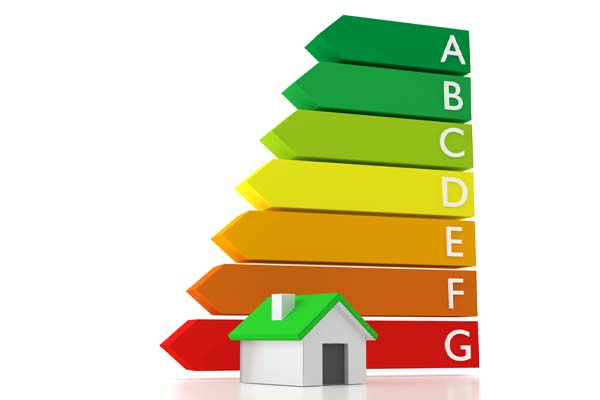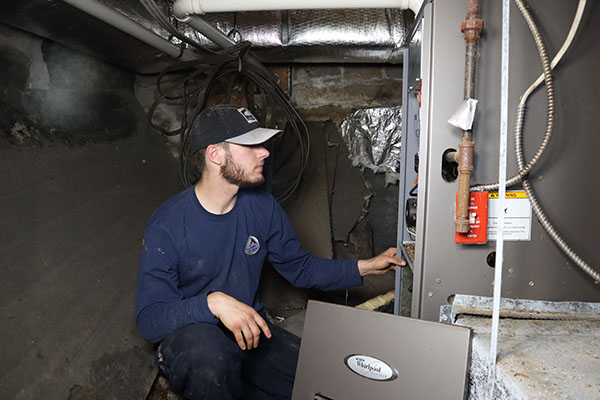Table of Contents
Large furnaces are remarkable, but they aren’t always the best choice. Your oversized unit will provide sub-optimal results since your home is incompatible. You should focus on matching your unit to your home’s needs instead of getting the largest available size. Choosing a furnace can be complicated because several considerations are involved. An experienced HVAC technician can conduct a scientific analysis so you get guaranteed compatibility. This article explains why it is crucial to have the correct furnace sizing.
Why Is Furnace Sizing So Important?
Many homeowners get it wrong when choosing a furnace. They usually undershoot or overshoot the mark because they don’t have proper guidance. As a result, they suffer the adverse effects of their inexperience.
The farther your selected furnace unit is from the ideal size, the more extreme the consequences will be. It may even result in financial or physical stress instead of providing comfort for your family. Remember that even the smallest gaps can cause irritation. Getting it right from the onset means you can enjoy years of hassle-free ownership. Read on to learn the cons of incorrect furnace sizing and valuable strategies on how to select an accurately sized furnace for your home.
What’s Wrong with Oversized or Undersized Furnaces?
Here are the four factors that will be affected when you have an oversized or undersized furnace:
Related Article: Signs Your Air Conditioner Needs A Replacement
Comfort

An undersized furnace cannot warm your home properly due to insufficient power. This is particularly obvious on the coldest day of the year. Your heating system may run on full blast, but you still need to wear layers of clothes or hide under thick blankets. The undersized furnace can work the entire day but still fail to achieve the preferred temperature.
On the other hand, oversized furnaces create their own issues. It will make some areas warm faster than others, tricking the thermostat into sensing that the entire home is already warm. This triggers the furnace to shut off even though other rooms are still relatively cold. You may hear complaints regarding uneven temperatures from affected occupants.
Furnace Efficiency

Furnace energy usage fluctuates per the unit’s activity level. The start-up and shut-down phases tend to consume more energy, so you’d want to minimize these. A furnace achieves optimal efficiency during the middle stage when it is in a steady state.
As previously mentioned, excessively large furnaces will likely turn on and off quickly. This is a problem called short cycling. It occurs constantly throughout the day, using more energy than a system that’s the right size. It also never runs on a steady rhythm. Conversely, undersized units work harder to warm your home. This leads to faster wear and tear. Heating systems are responsible for almost half of the energy needs of US households. Therefore, inaccurate sizing tends to make it worse for families and the environment.
Energy Costs
All things have a price. Therefore, consuming more energy means you’ll have increased monthly bills. It is true whether your furnace utilizes propane, natural gas, or heating oil. An undersized or oversized furnace will make you spend more on fuel than necessary. It can mean thousands of dollars annually. You can spend this much in excess but not get anything good in return. Instead of feeling comfortable, your home will have uneven heating. Prevent wasteful spending and ensure your furnace size is right from the start. Consult an HVAC expert to compute the right furnace size.
Related Article: Air Conditioner Noises To Be Aware Of
HVAC Lifespan
Short cycling doesn’t just negatively affect the comfort and efficiency of your home. It is also a bane to the service life of the furnace and its associated components. Components will wear out faster when the furnace turns on and shuts off rapidly. The system may only last for a decade or less instead of getting 20 years more of service. This will also happen to undersized furnaces.
This means you’ll need to buy another furnace sooner than expected and spend thousands of dollars on a new unit. This is not a small matter, so spending money wisely on correct professional assessment is best. Experienced HVAC contractors help you find the ideal furnace for your home.
How Proper Furnace Size Is Calculated
Here are several ways your furnace size can be appropriately calculated:
Load Calculation

Each home has its own heating needs. Many factors affect the load area, including the layout, floor area, orientation, window type, siding material, and insulation level. Experts typically use advanced software as manual load calculation can be a long and complicated process. They only need to plug in the values, and the software can provide immediate results.
Old-fashioned technicians may use simple rules to get their figures, often resulting in inaccurate assessments. Ensure that you hire HVAC professionals who utilize modern techniques so you can get the exact numbers you can trust. Do this the next time you need a heating system replacement.
Related Article: Top 6 Benefits Of Getting An Air Conditioner Tune-Up
BTUs
If you are unsure about furnace replacement and want to study your options before calling professionals, there are two variables you can use to get a quick estimate. These are your home’s square footage and your area’s heating factor. You only need to multiply these two factors, and you’ll get a rough estimate.
Indoor heating should respond to outdoor temperatures. If your area is near the equator, you’ll likely have high temperatures for most of the year. Moving up in latitude means the area will get colder, making the heating system load heavier. For instance, California’s heating factor is 30 to 35 BTUs, while Minnesota’s is between 50 and 60 BTUs.
Related Article: Why Is My Air Conditioner Running In Short Bursts?
Insulation

Regional climate cannot be controlled. However, you can insulate your home. A high insulation level means external factors have a reduced impact on the temperature inside your home. Use the insulation material of your choice and install them throughout outer walls, attics, floors, ceilings, basements, and other vulnerable areas. You should also seal the gaps in your windows and doors. Doing this means you can get a furnace below the expected load, and it’ll work fine. For instance, a Minnesotan home that has a floor area of 1,000 square feet would usually require a 60,000-BTU furnace. However, you can have a significantly lower load when you intervene with insulation.
Conclusion
Compatibility is what is crucial when it comes to furnace size. Therefore, get one that best suits your home and not just the biggest one you can get your hands on. Ask an HVAC professional to conduct advanced load calculations to get accurate figures. The rewards for your diligence include a longer furnace lifespan, a comfortable home, efficient energy use, and considerable energy savings.
Related Article: Questions To Ask When Choosing A Propane Company
Call Lake Region Energy For All Your HVAC Requirements

Lake Region Energy provides top-notch HVAC services in Maine and New Hampshire. We have the best professionally certified technicians who are experts on excellent heating and cooling replacements, installations, repairs, and tune-ups. You can count on our techs to be knowledgeable, skilled, and experienced in servicing your HVAC system accurately and safely.
Our company guarantees quality and affordable HVAC services. Our maintenance services can improve home comfort and energy efficiency while lowering your heating expenses. If you require an HVAC repair or replacement system, we can suggest the most suitable solution within your budget. All our work is guaranteed. To schedule a service appointment, give Lake Region Energy a call today. We offer free, in-home estimates.
For more information about our fuel deliveries and HVAC services, be sure to contact Lake Region Energy. You can click here to contact us, or you can call us at (207) 839-5500 to find out more. We offer a full line of heating and cooling repairs, maintenance services, and installations.
